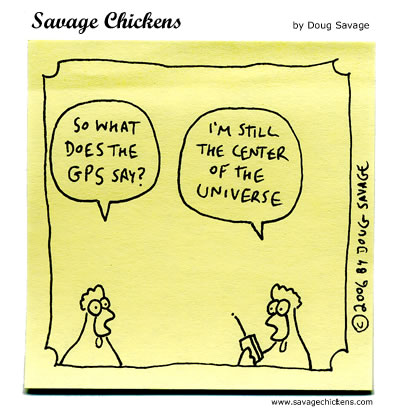Presidential Decision Directive NSTC-6 of 1996 provided the revolutionary vision of making reliable, accurate GPS a possibility for every citizen. Until then, GPS was the intended domain of the military, and signals available to civilians were intentionally messy, providing accuracy to 100 yards instead of the 10 yards which the system was designed to provide. This messiness was called "selective availability" and was intended to prevent persons with nefarious intent from using GPS to carry out deeds of ill will. NSTC-6 laid out a plan for the President to assess the status of the GPS system, consider the potential benefits and costs of providing more accurate service to the public, and, as early as 2000 and no later than 2006, remove selective availability from GPS.
Fortunately for us everyday citizens, the U. S. Coast Guard had already been working behind the scenes trying to make GPS work for strict navigation requirements despite being hampered by selective availability. They called the project "Differential GPS" (DGPS). By setting up beacons along the water with very precisely known locations, the Coast Guard could identify the error in GPS signals, send correcting algorithms to mariners, and provide an accuracy just as good as if selective availability did not exist. Here's what the Coast Guard had to say about the development of DGPS from its DGPS Concept of Operations, published in August of 1995:
"In the last three decades, the U.S. Department of Defense (DOD) has led technology from terrestrial to space-based radionavigation systems, first with TRANSIT, and then the prototype NAVSTAR Global Positioning System (GPS). GPS, as with previous DOD radionavigation systems, was designed to meet military mission requirements with little consideration for civilian applications. However, as prototype GPS satellites were placed in orbit, innovative civil users found economical applications for the available GPS signals. Perceiving the growing demand, industry developed and produced GPS receivers tailored to emerging civil market applications. DOD requested the U.S. Department of Transportation (DOT) assume the lead in civil GPS matters. In February 1989, DOT assigned the U.S. Coast Guard as the lead agency in providing a civil GPS interface.
The U.S. Coast Guard's assignment to the civil interface role followed the natural evolution of past U.S. radionavigation systems. The U.S. Coast Guard had been involved in the investigation of potential GPS civil use since the late 1970s and was therefore well prepared for this interface initiative. During this same period, the U.S. Coast Guard Research and Development Center in Groton, Connecticut, had been conducting research and testing of differential techniques to enhance Loran-C and Omega accuracy. The differential effort was driven by the search for a system with the capability to meet the accuracy requirement for Harbor/Harbor Approach (HHA) navigation as had been defined in the Federal Radionavigation Plan (FRP). The FRP identifies an accuracy of 8 to 20 meters (2 drms) is required for the HHA phase of navigation."
While President Clinton dealt with other matters of running the country, the Coast Guard continued developing DGPS and deploying its beacons. Soon, it had a robust constellation providing mariners with a National DGPS system that made selective availability irrelevant, so long as the mariners were within range of DGPS beacons. 
Along rolled the year 2000, NSTC-6's earliest timeline for the President to assess the need to keep SA. With the civilian market clamoring for better GPS service and the USCG already providing service as good or better than GPS without Selective Availability, the President opted to shut SA off that very year instead of waiting until 2006. At the time this cache is being published, geocaching is entering its 15th year due, in part, to the work the Coast Guard had done to leverage GPS technology for safe navigation in the face of selective availability.
~~~~~~~~~~~~~~~~~~~~~~~~~~~~~~~~~~~~~~~~~~~~~~~~~~~~~~~~~~~~~~~~~~~
The cache is located at: N 37° 06.###, W 076° 27.%%%
### = the Broadcast Site ID for the DGPS beacon that primarily serves mariners approaching and operating in the Hampton Roads region.
%%% = the Broadcast Site ID for the DGPS beacon that primarily serves mariners approaching and operating in the Ports of New York & New Jersey (e.g., NYC).
You can check your answers for this puzzle on GeoChecker.com.
OK - remember once you find it, to claim the find you HAVE TO SIGN THE LOG. That's the rules. Please return it so that everything closes up tightly. Thanks tons!
FTF gets an unactivated QR Code TB tag. --> Congrats to CoastalGypsies on their 2nd FTF of an everplaid cache! (They FTFed the "Mind Your Pets" cache.)
